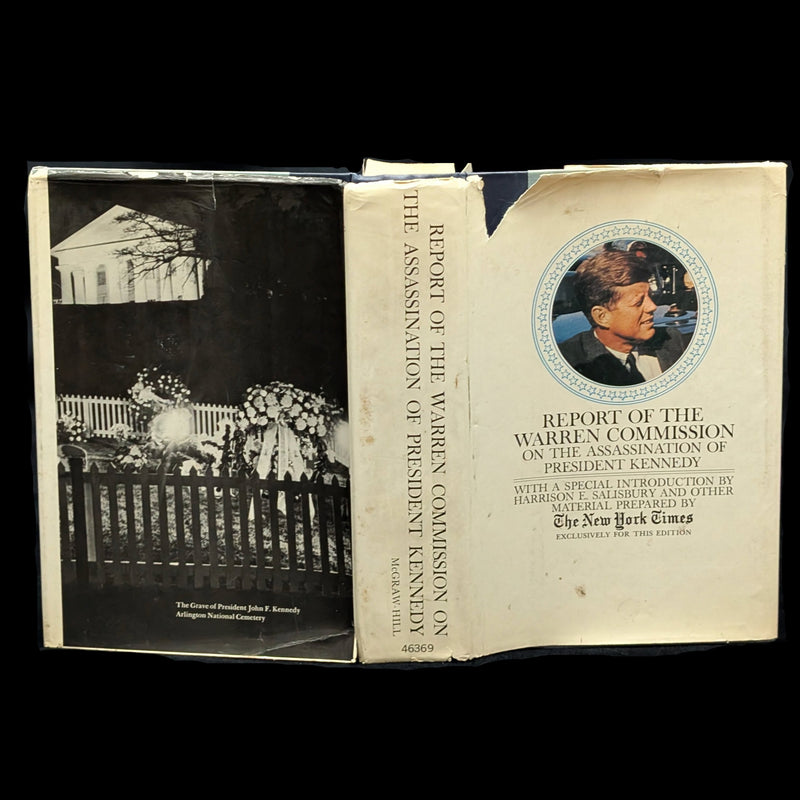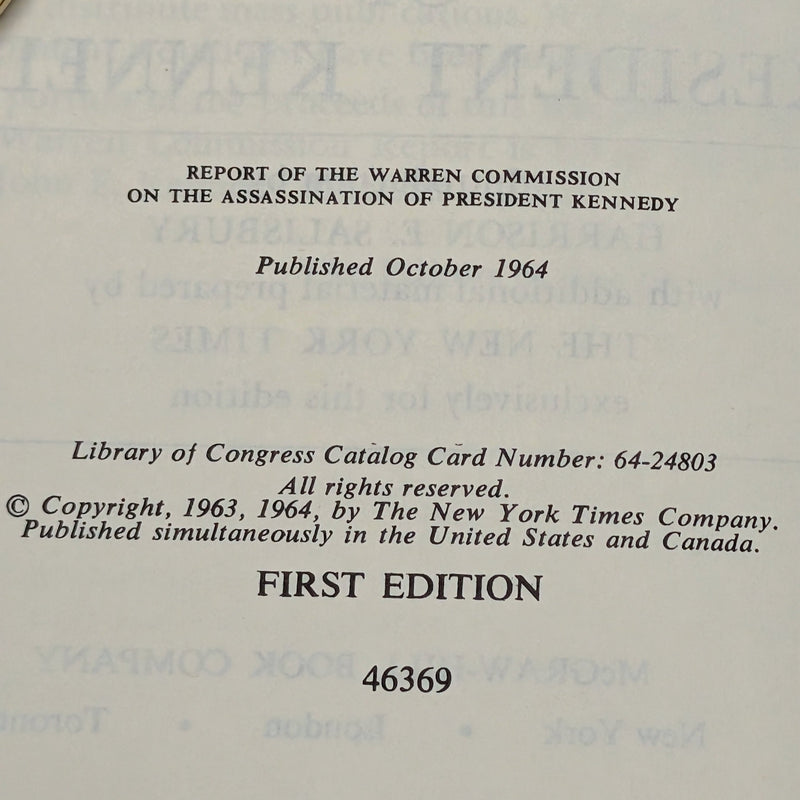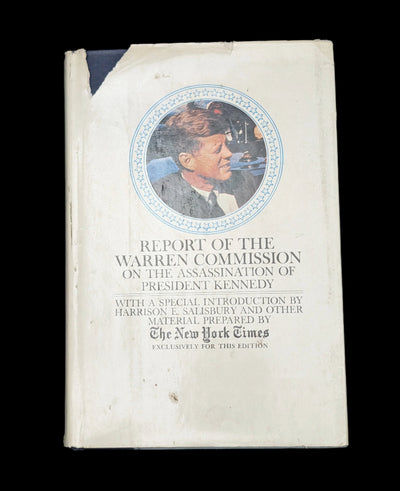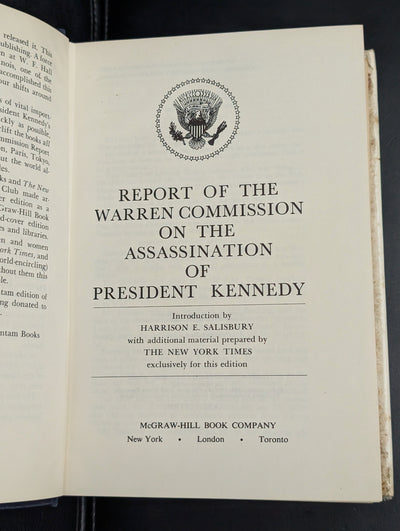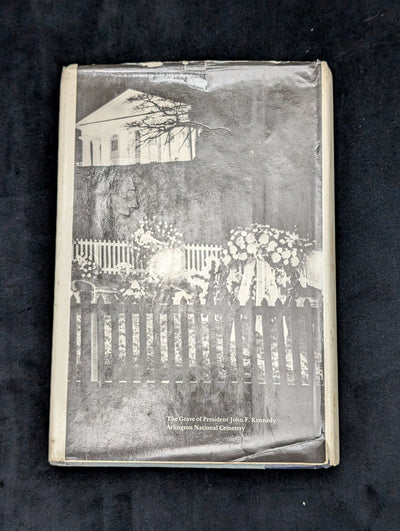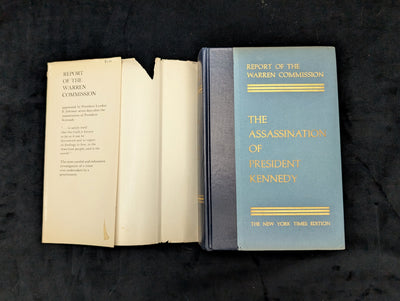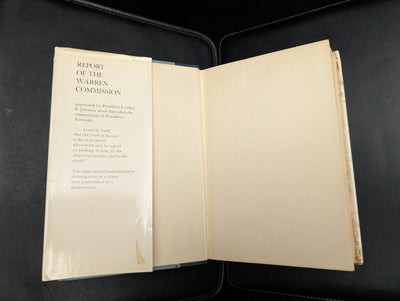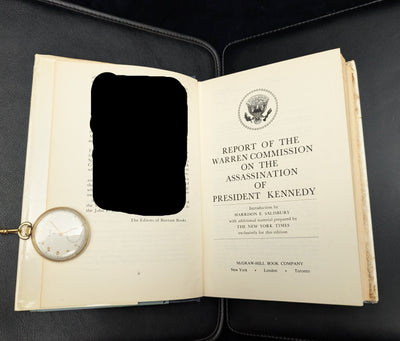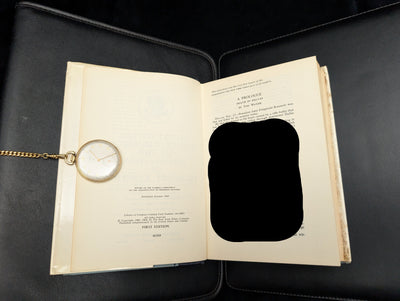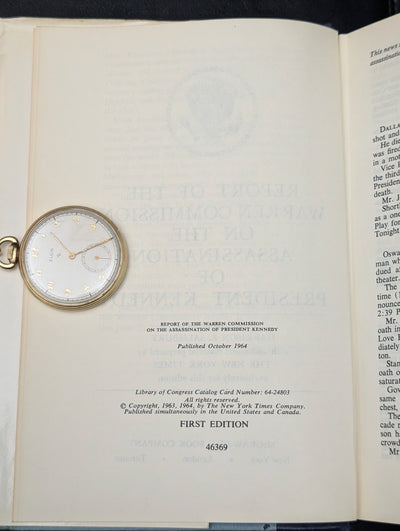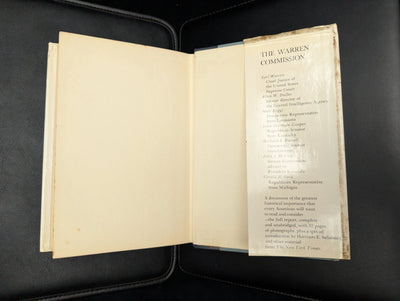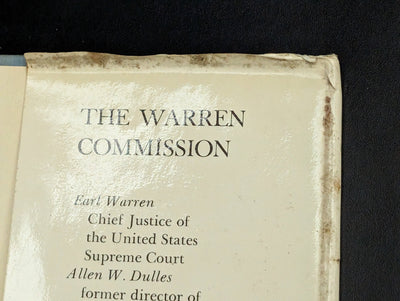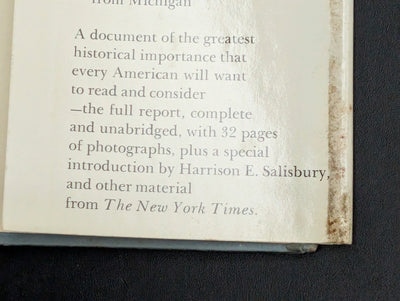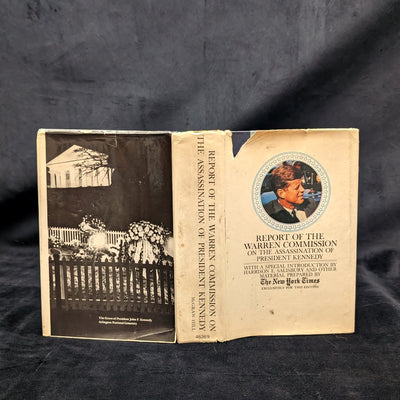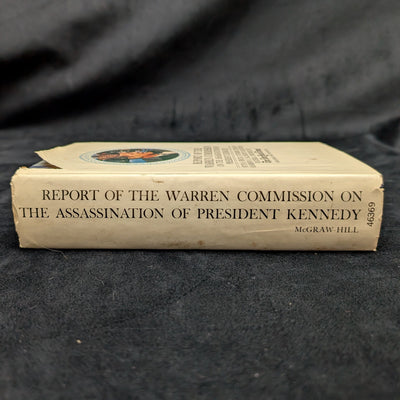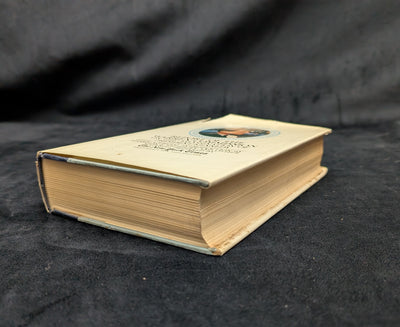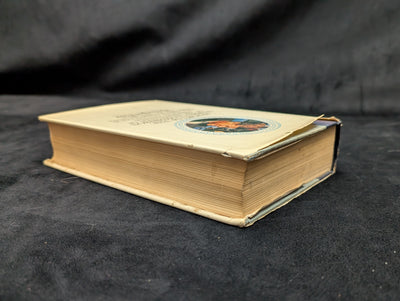Report Of The Warren Commission On The Assassination Of President Kennedy (The New York Times Edition), First Edition, 1964 📜🏛️🇺🇸
1. Introduction 📜🔍🏛️
This is an original First Edition of the official, public-facing report on the assassination of President John F. Kennedy, published commercially by McGraw-Hill in conjunction with The New York Times in October 1964. While multiple publishers condensed the 27-volume government findings for mass distribution, this edition is a foundational document of modern American political history. It is not merely an official government record; it is the version filtered through the editorial lens of the most influential newspaper in the country, featuring a crucial introduction by Pulitzer Prize winner Harrison E. Salisbury. The book is a required asset for any serious collector of presidential history, political ephemera, or mid-20th-century Americana.
2. About the Book/Object 📖✍️✨
The volume is the comprehensive, full, and unabridged report of the President's Commission on the Assassination of President Kennedy. It was ordered by President Lyndon B. Johnson and chaired by Chief Justice Earl Warren. The book’s primary objective, stated on the commission’s behalf, was to “ascertain, evaluate and report upon the facts” related to the assassination and the subsequent killing of Lee Harvey Oswald. This edition includes 32 pages of photographs and special commentary from The New York Times, making it a unique publishing event. The conclusion, which found that the shots were fired by a lone gunman, Lee Harvey Oswald, remains one of the most controversial and discussed findings in American history.
3. About the Author/Maker ✍️🏛️
The formal author is the Warren Commission, a bipartisan panel of seven members including Chief Justice Earl Warren and then-Representative Gerald R. Ford. The intellectual authority of this commercial volume, however, is heavily supported by its key editor, Harrison E. Salisbury. Salisbury was one of the most distinguished and influential American journalists of the 20th century, winning a Pulitzer Prize in 1955 for his reporting from Moscow. He was known for covering global conflicts and controversial events, including the Vietnam War and the civil rights movement. Salisbury directed the New York Times’ coverage of the Kennedy assassination in 1963, placing him at the center of the story’s media and political aftermath. His editorship here ensures the material is presented with the analytical rigor and depth expected of a Pulitzer-level journalistic authority.
4. Historical/Political Era Context 🌍🕰️📜
The book is a direct artifact from the intense, post-assassination period that immediately followed November 22, 1963. The United States was in a state of profound shock and political uncertainty following the death of its young president, and the nation was looking to the highest levels of government for an official explanation. This report was published in October 1964, less than a year after the tragedy, marking the official close to the investigation and serving as a critical cultural moment.
The release of this report occurred during a time of both intense domestic change and global tension. While President Lyndon B. Johnson was pushing for the Great Society and civil rights legislation, the Cold War was at its height, and the shadow of the Vietnam War was rapidly extending over the country. The findings—that a single individual was responsible—were intended to provide closure, but instead, they fueled decades of public speculation and a deep-seated suspicion of government institutions, which continues to this day. This volume is a physical time capsule of the very beginning of that crisis of public trust.
5. The Ideal Collector 💡🧐🏛️
This volume is tailored for a collector who seeks first-person accounts and official records of American political and military history. The Ideal Collector is a scholar of the Kennedy legacy, a curator of true crime history, or an academic specializing in the evolution of government transparency and modern conspiracy culture.
This artifact belongs in a collection focused on the Mid-Century Modern political narrative, situated between the idealism of the New Frontier and the upheaval of the late 1960s. The unique New York Times editorial framing appeals specifically to those who value the media’s influence on historical events.
6. Value & Rarity 💎✨🏛️
The value of this First Edition is anchored in its status as a First Printing of the official commercial report, which is a mandatory acquisition for any serious collector of presidential literature. The book is 60 years old this year, having survived six decades of social, political, and historical upheaval. While many copies were printed, its value is derived from its editorial distinction; the inclusion of material prepared exclusively by The New York Times and the involvement of Harrison E. Salisbury transforms it into a journalistic artifact.
However, the mandatory deduction principle must be applied due to the lack of the original dust jacket and the heavy external condition flaws visible in the provided photos. Pristine copies with a dust jacket can achieve over $145.00. Given the structural integrity is intact, but the aesthetic is compromised, this asset is positioned as a historically solid acquisition at a mid-range value, representing an official First Edition at a price point below the ceiling reserved for Near Fine copies.
7. Condition 🔎📚✨
This is a First Edition hardcover lacking the original dust jacket. The book displays significant and verifiable condition issues that have been documented in the provided photography.
-
Positive Qualities:
-
The binding remains square and tight.
-
The gilt lettering on the spine and front board is visible.
-
The text block is solid, and pages appear generally clean.
-
Imperfections:
-
There is heavy dirt, soiling, and localized staining to the edges of the book boards, particularly on the rear and spine ends, consistent with poor archival storage.
-
The boards and corners show rubbing and shelf wear.
-
The blue cloth on the spine has a degree of fading or wear.
-
The absence of the original dust jacket triggers a mandatory deduction from the aspirational collector price.
8. Fun Facts & Unique Features 🤓📜🤩
-
The Warren Commission Report was not published by the Government Printing Office until 1964; however, the book’s copyright date includes 1963, a testament to the urgency and speed with which the New York Times prepared its material in the immediate aftermath of the tragedy.
-
The code 46369 printed on the copyright page and the spine base of the original jacket is a crucial bibliographical identifier for this specific McGraw-Hill first printing.
-
Gerald R. Ford, a committee member, spent the rest of his life staunchly defending the integrity of the commission’s conclusions. Signed copies by Ford often include the handwritten inscription: “Warren Commission was Right.”.
-
The original government version of the report was a single, 888-page volume, but the complete record of testimony and exhibits spanned 27 volumes. This commercial edition was the public's primary source of information.
9. Supporting Information 🏷️📦💰
-
Title: Report of The Warren Commission on the Assassination of President Kennedy
-
Author: The President’s Commission on the Assassination of President John F. Kennedy (The Warren Commission)
-
Editor/Introduction: Harrison E. Salisbury and The New York Times Company
-
Year of Publication: 1964
-
Publisher: McGraw-Hill Book Company
-
Place of Origin: New York, London, Toronto
-
Format/Binding: Hardcover, Half Blue Cloth and Blue Paper Wrapped Boards, Gilt Title
-
Edition: First Edition (Stated)
-
Rarity: Common Edition, Rare in Fine/Jacketed Condition
-
Inscriptions/Notes: A numerical code is handwritten in pencil on the front free endpaper: "3/95". A separate, small stamp appears on the flyleaf: "3.00".
-
Verbatim Transcription of Inscription: The code “3/95” and the stamp “3.00” appear to be historical bookseller or collector price notations. The “3/95” notation, often seen as a price and date, likely refers to an internal inventory or sale price of $3.95 from the 1970s or 1980s, which was the original dust jacket price on a fine copy. The $3.00 stamp is a separate price notation.
